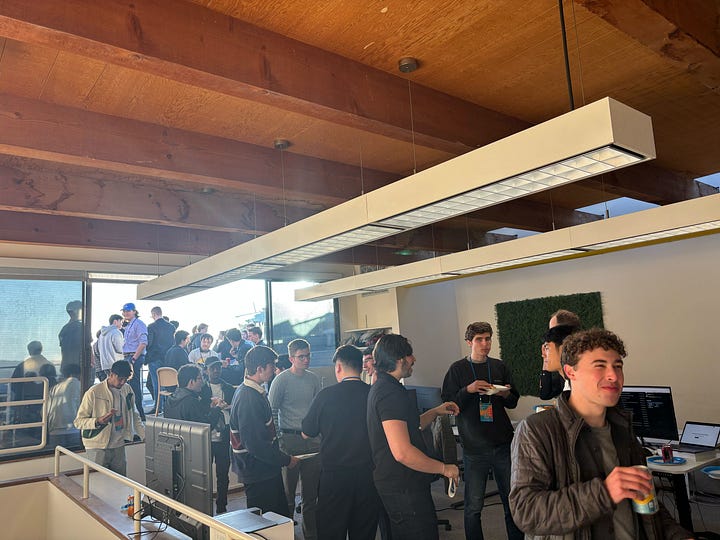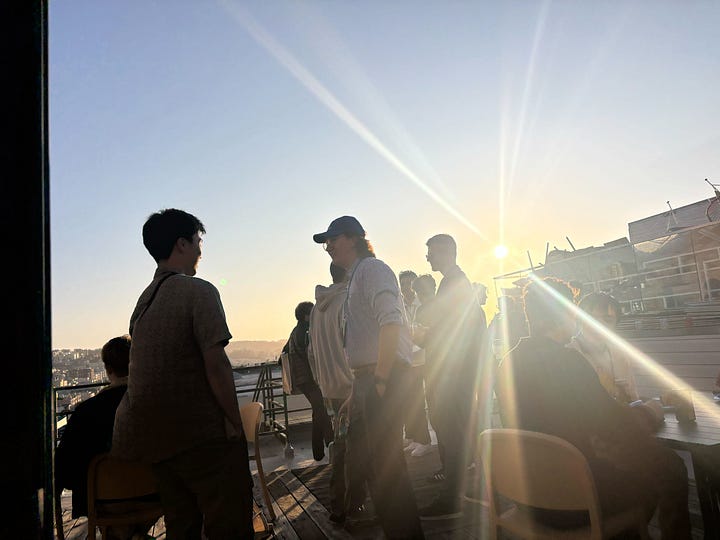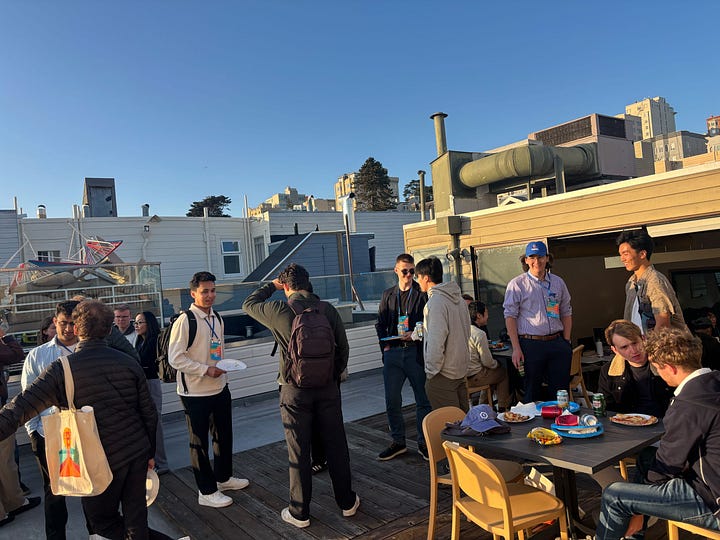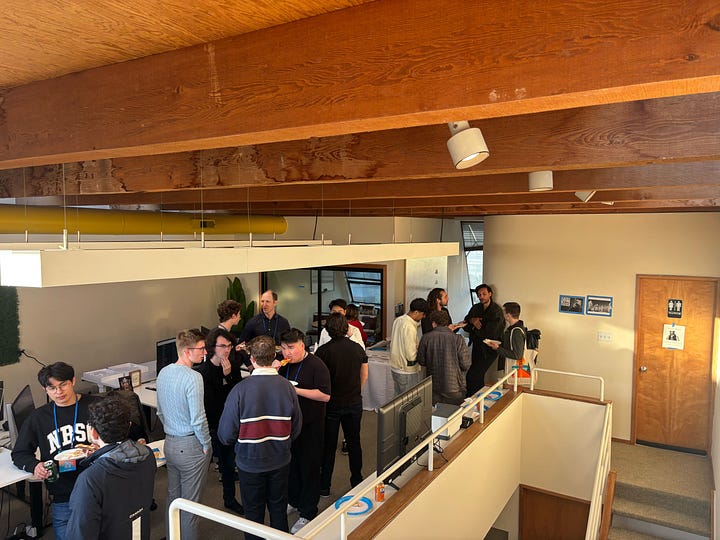Top Secret #19: "Wait, They Want to Use Us?!"
This week, we talk about getting inbound from big companies, multiplying our SDKs, our YC AI Startup School Party, Joey Chestnut's triumphant return, and more.
Things are still busy. We fielded a bunch of inbound customer interest last week. In just a few months (we really started work on Tesseral in late December) we’ve hit feature parity with our more established competitors, most of whom have big teams and gigantic war chests of venture capital. Candidly, I’ve been surprised by the scale and maturity of the businesses that want to use Tesseral.
We’ve still got a long way to go. We have a ton of enhancements and polish left to be done.
We shipped some more stuff last week. A few highlights:
Our Axum SDK
Our FastAPI SDK
Audit logs as a service
We also open-sourced our docs. Having our docs as a private repo was mostly just an oversight. It didn’t really occur to us that people would already want to contribute to our docs.
A few things coming soon:
The SAML / SCIM config wizard, OIDC with enterprise IDPs
A reorganization of our console
Enhancements to styling and branding
A superior onboarding experience
A litany of bug-fixes and quality-of-life improvements
We’re also weighing a few options for our next SDKs: Django; Laravel; .NET, maybe? Let me know if you have a preferred framework that we don’t currently serve very well. Similarly, if we’re missing a social login provider (e.g., GitLab, Azure DevOps, SFDC, HubSpot) that you want to use, drop me a note.
OTHER THINGS: we hosted an event for Y Combinator’s AI Startup School last night. 50+ AI builders, students, and founders joined us for pizza and networking at our Russian Hill office. Here are a few pictures:




From the Blog:
eyJaafCsubstantially: cramming English words into JSON web tokens (JWTs). You can stuff some surprisingly long words into the Base64URL encoding of a JWT. I think the longest one you can do is substantially. There’s not really a point to this.
I designed some more user-friendly methods for multi-factor authentication. People really hate MFA. I did my best to design some elegant alternatives to the prevailing standards in our industry.
How Login with Google works: not really the blog, but still. We’re taking it upon ourselves to document the stuff that the big guys won’t.
What We’re Reading
Joey Chestnut returning to Nathan’s Hot Dog Eating Contest after 2024 ban: justice, at last. [A certain Tesseral employee
demandedasked that I include this link.]“Yuck”: Wikipedia pauses AI summaries after editor revolt: thank god. I hate seeing AI summaries. They’re universally tepid and boring and devoid of any insight. Taking the editors’ side here.
First-ever footage of the Antarctic gonate squid: researchers used a remote, deep-sea submersible to capture footage of this super cool squid that no one has ever seen before. I’m excited to see what further advances in software and robotics do for the natural sciences.
Plague of Phone-Addicted Tourists Shuts Down the Louvre: I don’t understand the impulse to take lots of pictures of museum exhibits. The volume of foot traffic from individuals suffering from that impulse has led to the temporary shutdown of the Louvre. Good thing you can find pictures of the Mona Lisa online.
How the Meanest Genre Got Nice: I love the way the New Yorker profiles musical artists. This is a portrait of a band – and a genre – that made itself accessible to the mainstream with time. From the article: “Hardcore was once known for its rigidity, but it has turned out to be an extraordinarily flexible genre, capable of surviving just about anything—even, perhaps, popularity.”
Car-sharing giant Zoomcar says hacker accessed personal data of 8.4 million users: not good. Another cool example of companies being obliged to file notices of material cybersecurity breaches via 8-K.
Meta’s Threads Is Declaring War on Spoilers (Exclusive): sometimes I wonder what big tech product executives are choosing to prioritize. This seems like an overly complicated solution. Reddit users solved this ages ago with simple inline text decoration.
Nerd CornerTM
I’m fascinated by the different peoples of the Pacific that underwent intense seafaring exploration. It’s hard to believe what people achieved, given the technology at hand.
Check out this Wikipedia article about Marshallese stick charts.
Islanders mapped out oceanic swells, islands, and more using nothing more than coconut fronds and shells. Then they’d memorize the charts before departing on voyages. Knowledge of the technique would simply pass from a father to his son.
This is amazing both for the cartographic system itself but also what the charts represented. How on earth did the Marshallese figure out how ocean swells worked?
Other Cool Stuff
Here are some neat links for you.
With almost no experience in CAD, 3D printing or aerodynamics modeling, I made a 3D printed VTOL drone that can fly 130 miles (link)
A JavaScript client for YouTube's private API, known as InnerTube (link)
Auto insert text between your images (link)
From The Archives
Thanks,
Ned




